Refined, Not Redefined
Long before the segment-bending X6, BMW's crossover strategy was simple: offer the utility of a traditional SUV but in a package that's not only luxurious, but fun to drive. The original X5 Sport
Utility
Activity Vehicle kicked things off in 1999, and only a few years later, the smaller X3 arrived.
Now, luxury crossovers are a dime a dozen, and automakers are clamoring to be a part of the small CUV segment. In just the past few years, we've been introduced to the Audi Q5, Mercedes-Benz GLK, Volvo XC60 and Infiniti EX35, among others. But as the X3 aged, its unusually harsh suspension and not-so-great interior plagued sales. In 2004, BMW moved roughly 35,000 X3s off dealer lots, and just last year, that number dropped to less than 10,000. Things aren't looking good for 2010, either.
Instead of trying to reinvent the formula, BMW has improved on the X3's original idea by offering more refinement, top-notch driving dynamics and heaps of technology focused on efficiency and connectivity. The end result is a compact crossover ready to regain its spot at the head of the class. Find out if BMW succeeded after the jump.
2011 BMW X3 - Click above for high-res image gallery
Long before the segment-bending X6, BMW's crossover strategy was simple: offer the utility of a traditional SUV but in a package that's not only luxurious, but fun to drive. The original X5 Sport
Now, luxury crossovers are a dime a dozen, and automakers are clamoring to be a part of the small CUV segment. In just the past few years, we've been introduced to the Audi Q5, Mercedes-Benz GLK, Volvo XC60 and Infiniti EX35, among others. But as the X3 aged, its unusually harsh suspension and not-so-great interior plagued sales. In 2004, BMW moved roughly 35,000 X3s off dealer lots, and just last year, that number dropped to less than 10,000. Things aren't looking good for 2010, either.
Instead of trying to reinvent the formula, BMW has improved on the X3's original idea by offering more refinement, top-notch driving dynamics and heaps of technology focused on efficiency and connectivity. The end result is a compact crossover ready to regain its spot at the head of the class. Find out if BMW succeeded after the jump.
Photos copyright ©2010 Steven J. Ewing / AOL
One of the primary issues that needed addressing was the X3's design. That's not to say the original X3 wasn't attractive, but its styling grew more outdated with each year, not only within the segment, but within the BMW lineup. The 2011 X3 uses the full suite of modern day BMW design language – larger, upright dual-kidney grille; angular, sideways-T taillights – and 80 percent of the time, it looks great.
The other 20 percent? When looking the X3 in the eyes, there's a strong character line below the headlamp cluster that's been softened, and the clear headlamp surround is more squared off. The end result is an oddly awkward front fascia, as if BMW's designers sculpted the new X3 and then realized they forgot to add headlights. It isn't horrible by any means, it just looks... off.
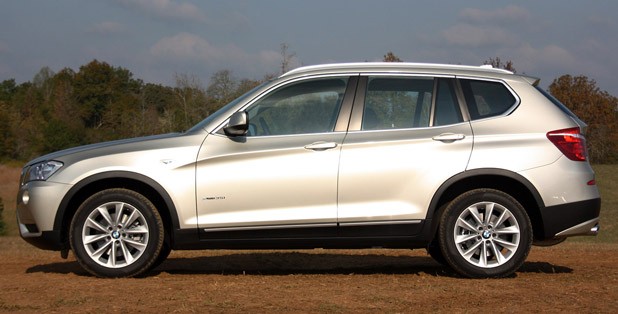
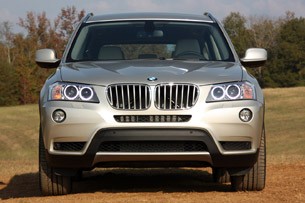
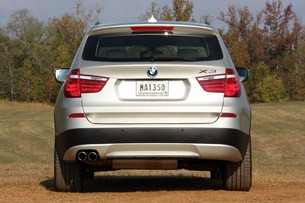
We like the side profile of the new X3 with its stronger character lines and upward slope to the rear window, and things are crisp, clean and fresh out back. We highly recommend opting for the Sport Activity Package ($1,550 or $1,850, depending on model) as it adds the X-Line exterior trim treatment and larger, more attractive wheels. Still, standard-issue X3s like our tester aren't too hard on the eyes, and while the overall design is sleek and fresh, it lacks some of the unique visual interest that you'll find on a Volvo XC60 or Mercedes-Benz GLK.
The X3 is slightly larger than its outgoing model, gaining 3.1 inches in length (183.0 total), 1.1 inches in width (74.1 inches) and 0.5 inches in height (65.4 inches). BMW points out that the new X3 is similar in size to the first-generation X5, and this dimensional increase means the automaker's smaller X1 will have more breathing room within the X Series. However, because the X3's proportions haven't grown all that much, interior dimensions haven't been greatly improved, either. In fact, front headroom and rear legroom have actually decreased for 2011.
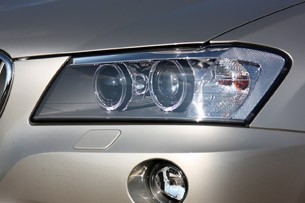
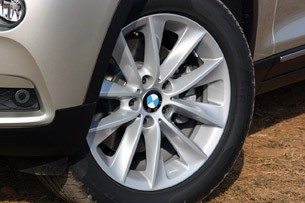
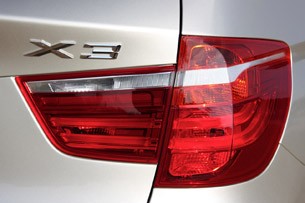
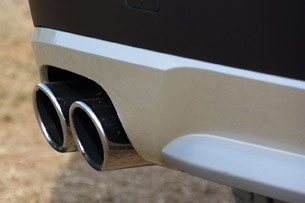
At first glance, the X3's interior feels a bit cramped for both the driver and front passenger, partially due in part to the wider center console and more sculpted, downward-sloping dash. If you've been in any of the latest crop of BMWs, the center stack will look extremely familiar, with the 8.8-inch iDrive screen placed front and center within the sloping lines of the dash. The integrated infotainment system has come a long way since its introduction in the 7 Series, and iDrive is more intuitive than ever. The X3's setup uses BMW's new ConnectedDrive software that offers enough features to make your iPhone jealous, including the ability to display e-mails when the vehicle is stationary, as well as a text-to-speech functionality that reads messages through the audio system while on the go.
Overall levels of interior refinement are top notch, and though the cabin isn't as stylish as what Volvo has done with the XC60, it isn't as cold and grey as the Mercedes GLK, and the controls are simpler and easier to navigate than the ones found in Audi's Q5. All of the seats are comfortable and supportive, especially the optional sport chairs fitted to our tester. Rear seat passenger room isn't as generous as the X3's size would lead you to believe, and the back seats cannot be moved forward or backward – something that would help greatly, especially when longer-legged folks are seated in the front.
At its launch, BMW will be offering the X3 in two flavors: xDrive28i and xDrive35i, using the same gasoline powerplants that we enjoy in the 3 Series sedan. An all-new xDrive20d four-cylinder diesel option is available in other markets, and naturally, BMW tells us that this model is "being considered" for American consumption. It's the typical response whenever we ask about diesel offerings, though BMW is seriously considering it, especially since sales of the diesel-powered X5 have exceeded original expectations.
We tested the higher-end xDrive35i, powered by BMW's delicious new N55 turbocharged 3.0-liter inline-six. 300 horsepower and 300 pound-feet of torque is more than enough to motivate the 4,222-pound 35i, and even with all-wheel drive, this X3 can do the 0-60 sprint in just 5.5 seconds on its way to an electronically limited top speed of 130 miles per hour. The naturally aspirated 3.0-liter mill in the 28i offers 240 hp and 221 lb-ft, meaning it'll take you 1.2 seconds longer to hit 60 mph, but we don't envision this engine ever feeling sluggish or underpowered. Even BMW's base engines are sweet-working mills these days. Unfortunately, none of the X3s on our drive program were fitted with the 28i setup, but if our experience in the 3 Series is anything to go on, we don't expect any thumbs-down verdicts for the base X3 engine configuration.
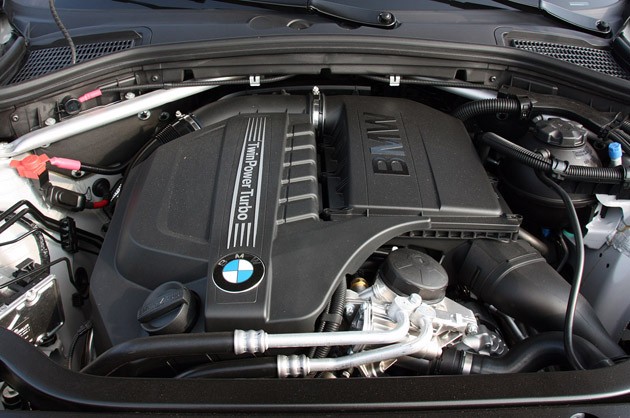
Both the 28i and 35i use a new eight-speed automatic transmission with manual shift function (steering wheel-mounted paddles are available on the 35i), and though official EPA fuel economy numbers have yet to be released, we're fairly confident that even the potent xDrive35i will be able to achieve a combined MPG number somewhere in the mid-20s. U.S.-spec X3s are no longer available with a row-it-yourself manual transmission, and to be honest, we don't really mind. The eight-speed auto is good stuff, and as much as we love a proper manual box, there just isn't a business case for that sort of thing in small crossovers. We need to stop crying about it.
Having eight cogs to stir through aids efficiency, though the transmission has an odd tendency to hesitate ever so slightly just before a gear is engaged. This is extremely noticeable in the sportier drive settings when you aren't using the manu-matic function, and though this quirk is dulled a bit in the standard drive mode, it's still present. That aside, gear changes are still smooth as butter and unlike other eight-speed automatics, the X3 makes the most of its low-end torque power to avoid the constant need to downshift when prodded to pass. The optional paddle shifters are a nice bit of added driver involvement, but we much prefer leaving the shifter in D and letting the X3 do the work itself – with eight gears to choose from, you'll be clicking the paddles an awful lot.
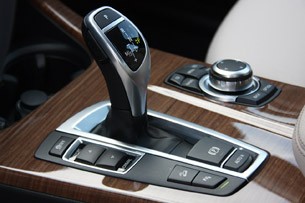
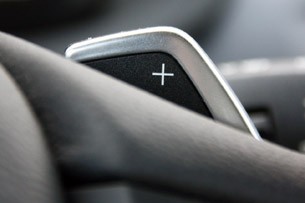
The X3s that BMW brought for us to test were all European-spec models fitted with the automaker's new start/stop system – something that won't be offered on U.S.-spec cars. This is BMW's first application of start/stop with an automatic transmission, and we applaud the smoothness and fluidity of the engine firing up just before taking off from a stoplight. Will we ever see BMW's start/stop functionality on cars slated for North American duty? It isn't in the cards quite yet, but BMW's executives told us to test it and give feedback about whether or not we think it's a useful addition to the X3 experience. Our verdict: Offer it in the States, even if it's a stand-alone option. In a time when fuel economy numbers can truly make or break potential sales, adding another MPG or two to the X3's window sticker certainly can't hurt.
BMW is coming through loud and clear on the sport part of its SAV nomenclature, especially with the addition of the optional Dynamic Driving Control and Dynamic Damping Control systems. This is the same sort of setup found in the 5 and 7 Series cars, where drivers can switch between Normal, Sport and Sport + modes, and an all-new five-link rear axle system dramatically improves overall ride comfort – perhaps our biggest complaint about the last-generation X3. The added 1.1 inches of width and our tester's larger 18-inch wheels with 245/55-series tires help to keep things planted and solid on the road. All in, the X3 has lost the harsh ride quality of the first-generation model while still retaining a level of firmness and confidence that you'd expect from a BMW.
Things are perfectly pleasant with the X3 left in Normal mode, but for drivers with an enthusiast soul, Sport and Sport + is where it's at. Here, the throttle response is sharper and the electric power steering offers more weight and feedback, though still providing a linear steering feel lock-to-lock. Additionally, the transmission comes into tune to the sportier driving style – it's more eager to hold a gear up to the redline and keeps your tach needle pointed right in the heart of the X3's powerband. If you're worried about sacrificing fuel economy, the driving control systems allow you to configure Sport mode to only improve the chassis, leaving the transmission alone, and unless you're seriously pushing the X3 down some challenging canyon roads, the eight-speed auto does a fine job of providing power on demand in its normal drive setting.
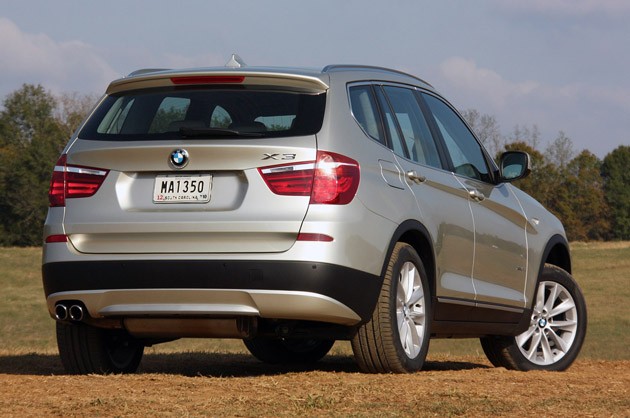
The new X3 hits dealerships later this year with the majority of sales expected to begin in the first quarter of 2011. The cost of entry is $37,625 for xDrive28i models and $41,925 for xDrive35i models, and in true BMW fashion, there will be an extensive options list encompassing things like sport, convenience and premium packages. What's more, BMW will be offering custom interior and exterior color packages, and consumers will be able to receive videos of their individual X3 as it moves through the different build phases within the automaker's Spartanburg, South Carolina plant.
We don't find many faults with the 2011 X3, but if we're honest, there isn't a lot to get excited about, either. What BMW has done is simply rework and refine its small crossover instead of jumping through hurdles to redefine its image. That's fine, but the end result is a vehicle that reeks of anonymity. It's the perfect vehicle for people... who have things... and like to drive to places. It's an entertaining, involving steer out on the road, but it won't turn heads like a Mercedes-Benz GLK, it doesn't look as classy as an Audi Q5 and doesn't speak of uniqueness like the Volvo XC60. Still, anonymity isn't all that bad, particularly when you have 300 hp on tap.
Photos copyright ©2010 Steven J. Ewing / AOL
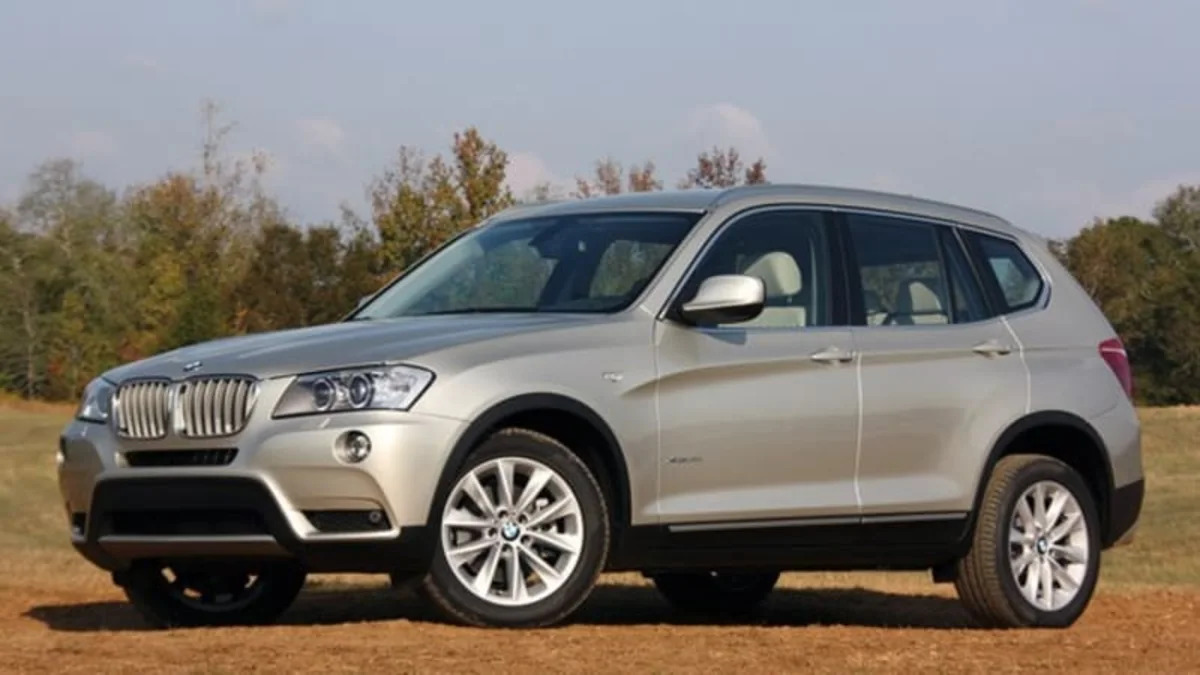


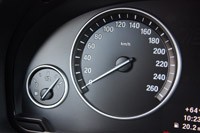
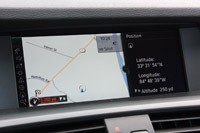
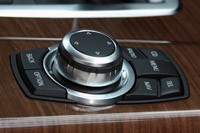

Sign in to post
Please sign in to leave a comment.
Continue